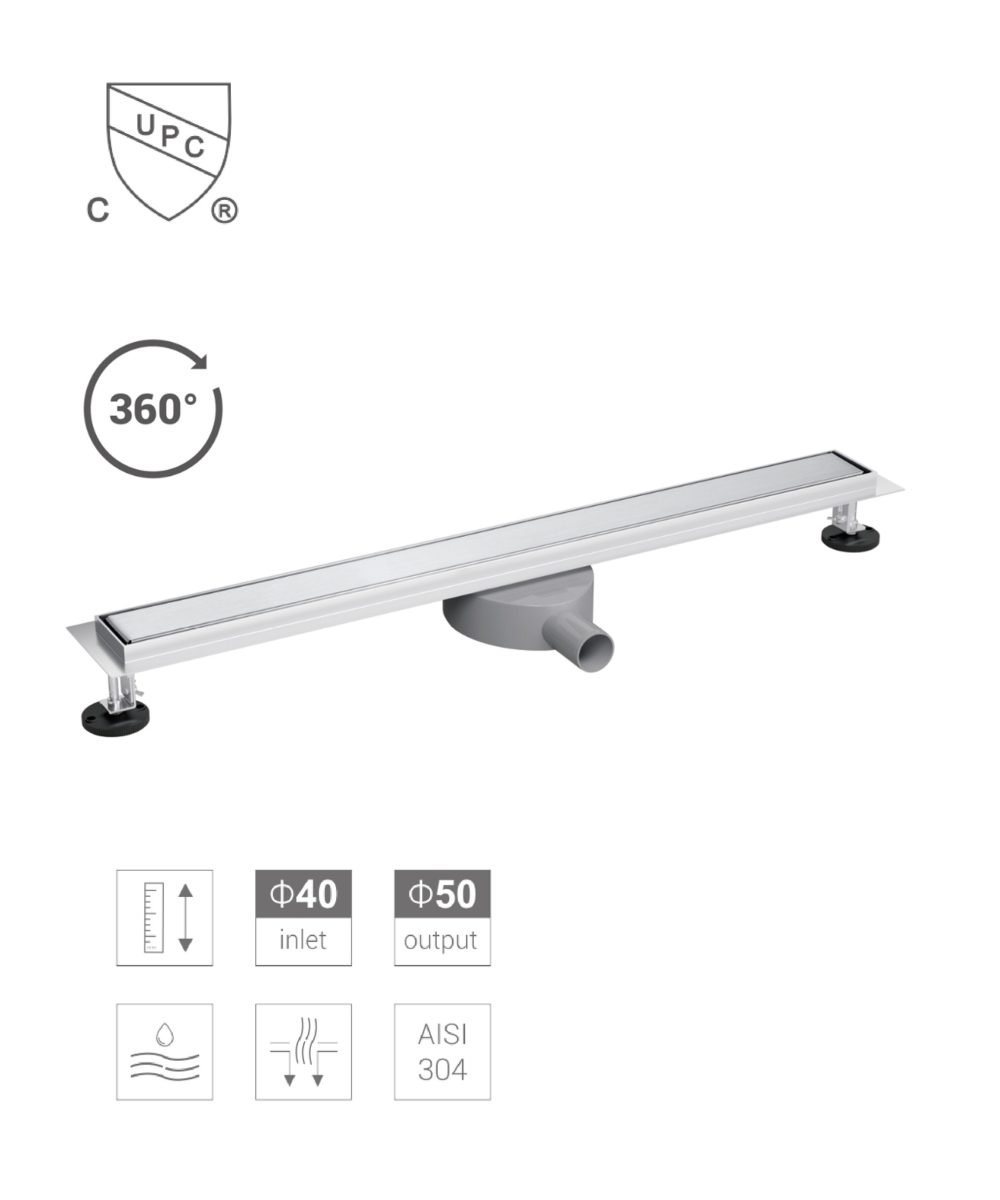Table of Contents
- Why Do Shower Drains Clog?
- Common Causes of Shower Drain Clogs
- Types of Shower Drains and Their Resistance to Clogging
- How to Prevent Shower Drain Clogs
- Noahhometech Shower Drain Solutions
- Maintenance Tips for Long-Lasting Performance
- Summary Table
- FAQs
- References
Why Do Shower Drains Clog?
Shower drains can clog for a variety of reasons, but most commonly it’s due to a combination of hair, soap scum, and mineral buildup. Over time, these substances accumulate inside the drain, reducing water flow and causing slow drainage or full blockages. Even with high-quality installations, maintenance plays a crucial role in preventing clogging issues.
Common Causes of Shower Drain Clogs
1. Hair Accumulation
Hair is the number one culprit for most shower drain clogs. It binds with soap and dirt to form dense clumps that stick to the inner walls of pipes.
2. Soap Scum and Hard Water Deposits
Soap residue, combined with minerals in hard water, can create a sticky buildup. Over time, this narrows the pipe diameter and restricts water flow.
3. Foreign Objects
Small objects such as jewelry, razor caps, or even pieces of plastic can accidentally enter the drain, causing sudden blockages.
4. Poor Drain Design or Installation
Improperly designed or low-quality drains can trap debris more easily. A high-quality drain system like those from Noahhometech minimizes clog risks with optimized flow paths and stainless steel construction.
5. Mold and Biofilm Formation
Moist, warm environments encourage mold growth and biofilm formation inside pipes, contributing to odors and slow drainage.
Types of Shower Drains and Their Resistance to Clogging
Different shower drain designs have varying resistance to clogging. Choosing the right model is essential for maintaining long-term performance.
1. Standard Type Shower Drain
- Simple and functional design for traditional bathrooms.
- Effective when paired with a removable strainer for hair capture.
2. Odor-Resistant Type Shower Drain
- Built with anti-odor seals that prevent backflow and unpleasant smells.
- Designed to minimize internal buildup, reducing clog potential.
3. Ultra-Thin Type Shower Drain
- Modern and minimalistic design that complements slim shower trays.
- Enhanced flow efficiency with fine filtration options.
4. Invisible Shower Drain
- Discreet aesthetic with a tile-in cover for seamless appearance.
- Smart internal channels prevent debris accumulation.
5. Linear Wall and Insert Wall Shower Drains
- Ideal for luxury showers and walk-in wet rooms.
- Wall-mounted system keeps floor surfaces cleaner and reduces blockage risks.
6. Square and Triangular Bathroom Drains
- Compact, stylish options for modern minimalist bathrooms.
- Available with anti-hair clog grates and removable covers.
7. Strip Vertical Shower Drain
- Offers vertical water discharge for efficient drainage.
- Commonly used in small-space or high-flow shower areas.
How to Prevent Shower Drain Clogs
Preventing drain clogs doesn’t have to be complicated. With proper cleaning and smart usage, your drains can function perfectly for years.
- Install a hair catcher: Place a mesh strainer or cover on top of your drain to trap hair and prevent it from entering the pipes.
- Clean drains regularly: Flush your drain with hot water and vinegar monthly to dissolve minor buildups.
- Avoid harsh chemicals: Chemical drain cleaners can corrode stainless steel and rubber seals. Use enzyme-based cleaners instead.
- Rinse after each shower: Run warm water for 30 seconds after showering to wash away residues.
- Schedule periodic maintenance: For commercial spaces like hotels or spas, routine inspection is key to long-term drainage health.
Noahhometech Shower Drain Solutions
Noahhometech offers cutting-edge drainage systems designed to minimize clogging risks while maintaining exceptional performance and style. Each product is made from 304 stainless steel and features precision engineering for optimal water flow.
Key Products:
- Standard Type Shower Drain: Simple design, easy installation, cost-effective.
- Odor-Resistant Type: Built with anti-siphon technology for fresh bathrooms.
- Ultra-Thin Type: Minimalist profile ideal for contemporary bathrooms.
- Invisible Shower Drain: Tile-in cover for a seamless floor look.
- Insert Wall Shower Drain: Hidden in walls, perfect for space-saving designs.
- Linear Wall Shower Drain: Offers high flow rate and stylish appearance.
- Strip Vertical Shower Drain: Compact and suitable for small spaces.
- Square or Triangular Bathroom Drain: Fits corner installations and aesthetic preferences
Why Choose Noahhometech?
- High-Quality Stainless Steel Construction: Ensures longevity and resistance to corrosion.
- Custom OEM & ODM Services: Tailored drainage solutions to match architectural needs.
- Innovative Design: Sleek and efficient designs for luxury interiors.
- Certified Durability: Global certifications for performance and safety.
Maintenance Tips for Long-Lasting Performance
Routine Cleaning
Use mild detergents and soft brushes to clean the drain covers weekly. Avoid metal tools that could scratch PVD finishes.
Professional Servicing
Every 6–12 months, have a plumber inspect your drainage system, especially for commercial facilities with high water usage.
Quick Fix for Slow Drainage
- Pour a mixture of hot water, baking soda, and vinegar into the drain.
- Let it sit for 15 minutes, then rinse with boiling water.
- This simple method helps dissolve grease and soap buildup.
Summary Table
| Aspect | Recommendation |
|---|---|
| Main Cause of Clogs | Hair and soap scum buildup |
| Best Prevention Method | Regular cleaning and hair catchers |
| Top Drain Material | 304 Stainless Steel (Noahhometech standard) |
| Recommended Drain Type | Odor-Resistant or Linear Wall Shower Drain |
| Maintenance Frequency | Weekly cleaning, semi-annual inspection |
FAQs
1. How often should I clean my shower drain?
For home use, once every two weeks is ideal. In hotels or commercial areas, weekly cleaning is recommended.
2. Are stainless steel drains resistant to clogs?
Yes. Stainless steel drains, like those from Noahhometech, resist corrosion and have smoother surfaces that reduce debris adhesion.
3. What should I do if my drain smells bad?
Clean the trap and use baking soda with vinegar. For persistent odor, consider upgrading to an odor-resistant drain model.
4. Can I install a linear wall drain in an existing bathroom?
Yes, but it requires minor renovation to align the drainage slope. Always consult a professional installer.










